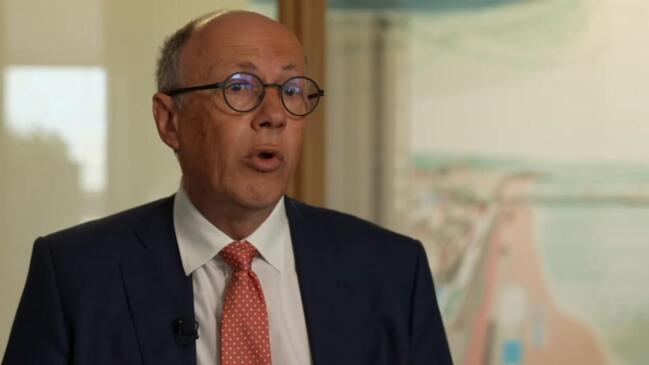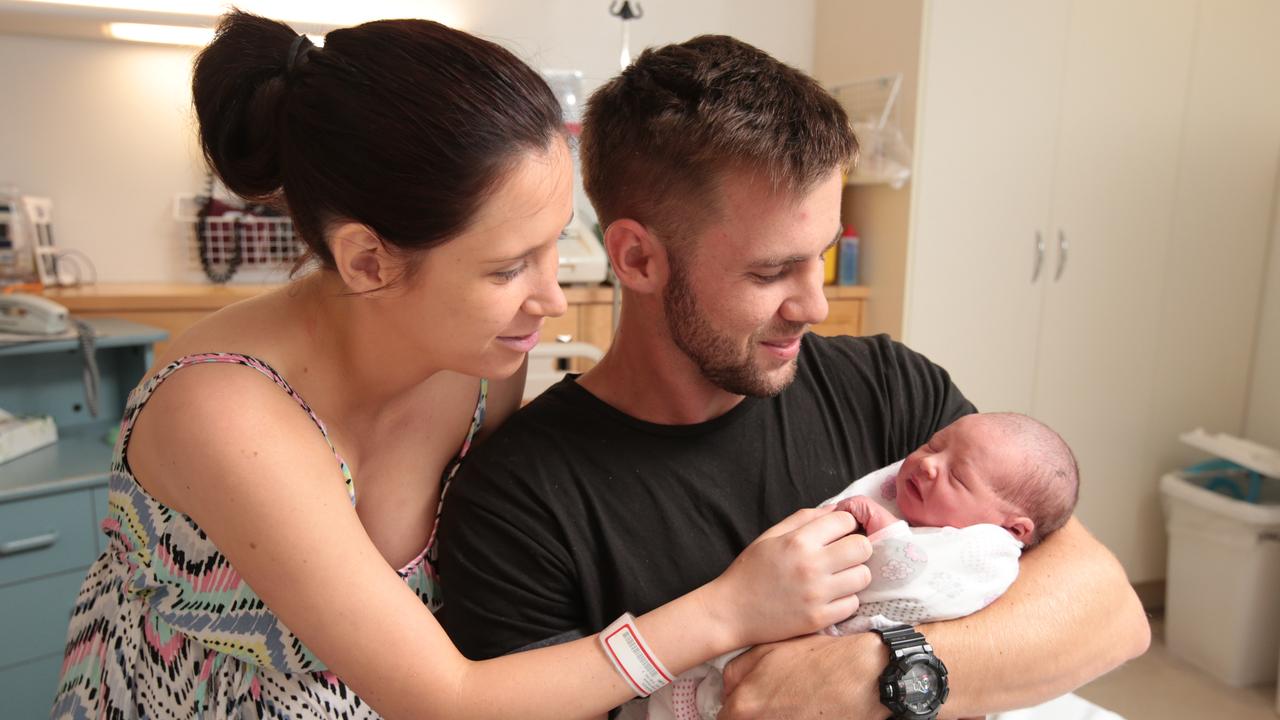Judge lashes child gender-medicine experts in blow for clinic
One of Australia’s foremost child gender medicine experts has been ruled to have misled the Family Court when giving evidence to support a mother who wished to prescribe her child puberty blockers.

One of Australia’s foremost child gender medicine experts has been ruled to have misled the Family Court when giving evidence to support a mother who wished to prescribe her child puberty blockers, in a judgment that calls into question the integrity of one of the nation’s peak gender clinics.
Justice Andrew Strum’s extraordinary judgment, which stripped the mother of custody and effectively prevented the child from accessing treatment, criticised the approach of hospitals to children questioning their gender, saying the decision to “affirm unreservedly” any child that raises concerns over their gender is “oddly binary”.
He also found the gender clinic that treated the 12-year-old failed to formally give a gender dysphoria diagnosis until the court proceedings had commenced, despite having treated the child since they were six.
The case marks the first time a sitting judge has blown a hole in the country’s gender-affirming treatment of care guidelines. While Justice Strum does not comment generally on the gender-affirming care model adopted by the gender clinic at the child’s hospital, the judgment raises big questions regarding the treatment of gender-incongruent children.
The matter centred on the biologically male child whose mother believes is gender dysphoric and should be prescribed puberty blockers, but whose father wanted to hold off on treatment and “let the child be the child”.
In handing down his judgment, Justice Strum sided with the father who did not wish to “pigeonhole” his child, and decided “all options” in the child’s life should be open.
“This is a case about a child, and a relatively young one at that; not one about the cause of transgender people,” Justice Strum wrote. “As this child grows, develops and matures, and explores and experiences life, the child might, with the related benefits of the passage of time and the acquisition of balanced understanding, come to identify as a transgender female and might elect to undergo some form of medical treatment, to affirm and/or align with that identity. But, similarly, with those benefits, the child might not do so, and for a variety of reasons.
“At this stage in the child’s life, all options should be left open, without any unacceptable risk of harm to the child.”
In his decision, Justice Strum declared gender dysphoria was not “immutable” but could be influenced by external factors, placing him at odds with the Australian Standards of Care, which back a gender-affirming treatment model.
He took issue with the “concerning” evidence given by one of the nation’s leading child gender experts – anonymised as Associate Professor L – in relation to the landmark UK Cass review.
According to the judgment, the professor “disagrees with much” of the Cass Review, which recommended limitations on medication for gender-dysphoric children.

“It is submitted by the Independent Children’s Lawyer ... and I agree, that Associate Professor L’s responses were ‘misleading or omitted findings/material that detracted from (their) opinion’ contrary to the obligations as an expert witness,” he wrote.
“Some of the many examples proffered are concerning.”
He found Associate Professor L and their colleague, Dr N, provided weak evidence to support the mother’s opinion that gender identity was “internal” and “not open to external influence”.
“The mother, in cross-examination, rejected even the possibility that external factors or influence might have any role to play in the child’s gender identity,” Justice Strum wrote. “However, neither of those experts were able to point to any empirical or substantive basis for their opinion but, rather, only to anecdotal reports from transgender adults about their experience of their gender identity.”
Justice Strum’s reliance on the Cass Report puts him at odds with his colleague, judge Peter Tree, who in a decision last year suggested there “may have been an overt political imperative” behind the landmark review.
“(Justice Tree) said that ‘it would be a mistake to view the Cass Review as arising out of an apolitical scenario’, referring to the Cass Report itself noting ‘internal tension between members of a previous iteration of the review panel, and the deep conflict between various professional groups’,” Justice Strum wrote.
“How such tension and conflict might suggest that the Cass Report did not arise out of an apolitical scenario is unclear and, with respect, I consider his honour’s comments to be speculative.”
The judgment takes aim at the Australian Standards of Care and Treatment Guidelines, developed by the Royal Children’s Hospital Melbourne and which endorse a gender-affirming model of care. Justice Strum said that while they were lauded as the country’s primary standards for treating gender-dysphoric children, they “do not have the approval or imprimatur of the commonwealth or any state or territory government, including any such government minister for, or department of health”.
Justice Strum also found the hospital of Associate Professor L and Dr N had failed to conduct a proper biopsychosocial assessment of the child, despite regular appointments over a six-year period. It also had not conducted an autism assessment despite known links between neurodivergence and gender incongruence.
He found Dr N’s diagnosis of the child as gender-dysphoric was only made “as the pending trial dates approached” and found the timing of the diagnosis was “more than merely coincidental”.
“Dr N conceded in cross-examination that the time pressure of the court process was one factor in the decision to conduct a diagnostic tool when she did,” Justice Strum ruled. “However, the Independent Children’s Lawyer submits, and I agree that, albeit one factor, it was a major one.
“Without such a diagnosis (or diagnoses), it is nigh inconceivable that the mother could have seriously prosecuted her application in relation to puberty suppression, let alone had any prospect of success. I find that the timing was more than merely coincidental.”
Further, he found that while Dr N supported the mother’s case that “because the child says so, the child is, and must unquestioningly be affirmed as being, female in gender identity”, it overlooked the fact that the child was just a child.

“Whilst in no way howsoever endorsing the practices referred to, and identified, as ‘conversion or reparative therapies’, it is concerning that an oddly binary approach is adopted in relation to children, especially of the age of the child the subject of these proceedings; that is, to affirm unreservedly those who present with concerns regarding their gender, brooking no questioning thereof,” Justice Strum said.
He dismissed allegations of family violence against the father as baseless, and found him to be a “considered, attuned and sensitive” parent who had not sought to suppress the child’s gender expression, but was simply opposed to premature medical treatment.
“It was conceded by the mother that, when in his care, including when sending the child to school, the father has not prevented the child from wearing gender affirming underwear and female clothes, including dresses, skirts, “skorts” … and leggings, as well as a gender-neutral school uniform,” the judgment reads.
“Further, the father has abided by the mother allowing the child to grow long hair, worn with hairclips or in a ponytail.”
Justice Strum ultimately rejected the hospital’s diagnosis of the child as being gender-dysphoric, and found the mother had attempted to use the child’s gender fluidity to damage the relationship with the father.
He said the court was “not concerned ‘in what the community thinks’ or ideologies, but only what, on the evidence, is in the child’s best interests”. “Ideology has no place in the application by courts of the law, and certainly not in the determination by courts exercising jurisdiction under the (Family Law Act) of what is in a child’s best interests,” he wrote.




